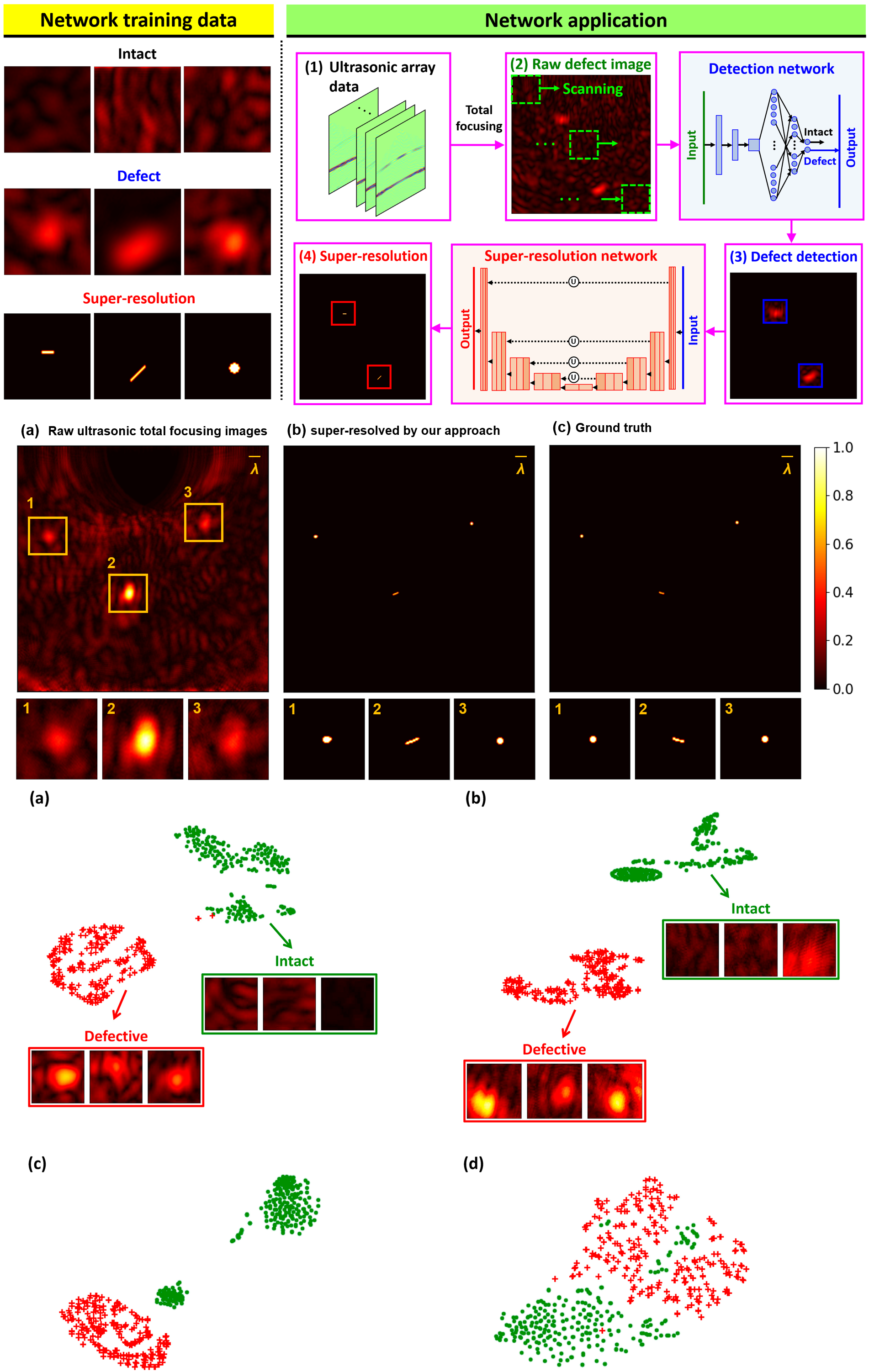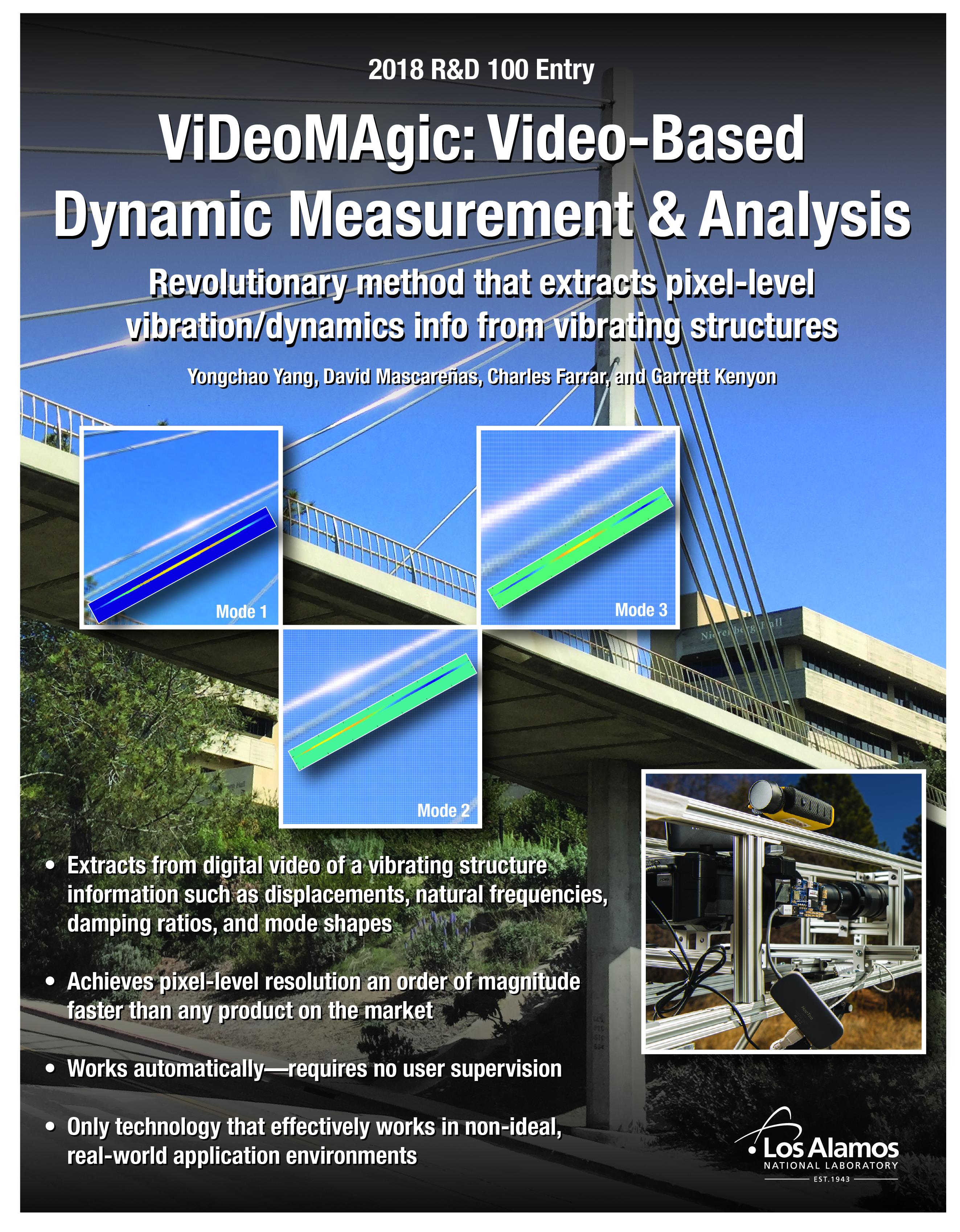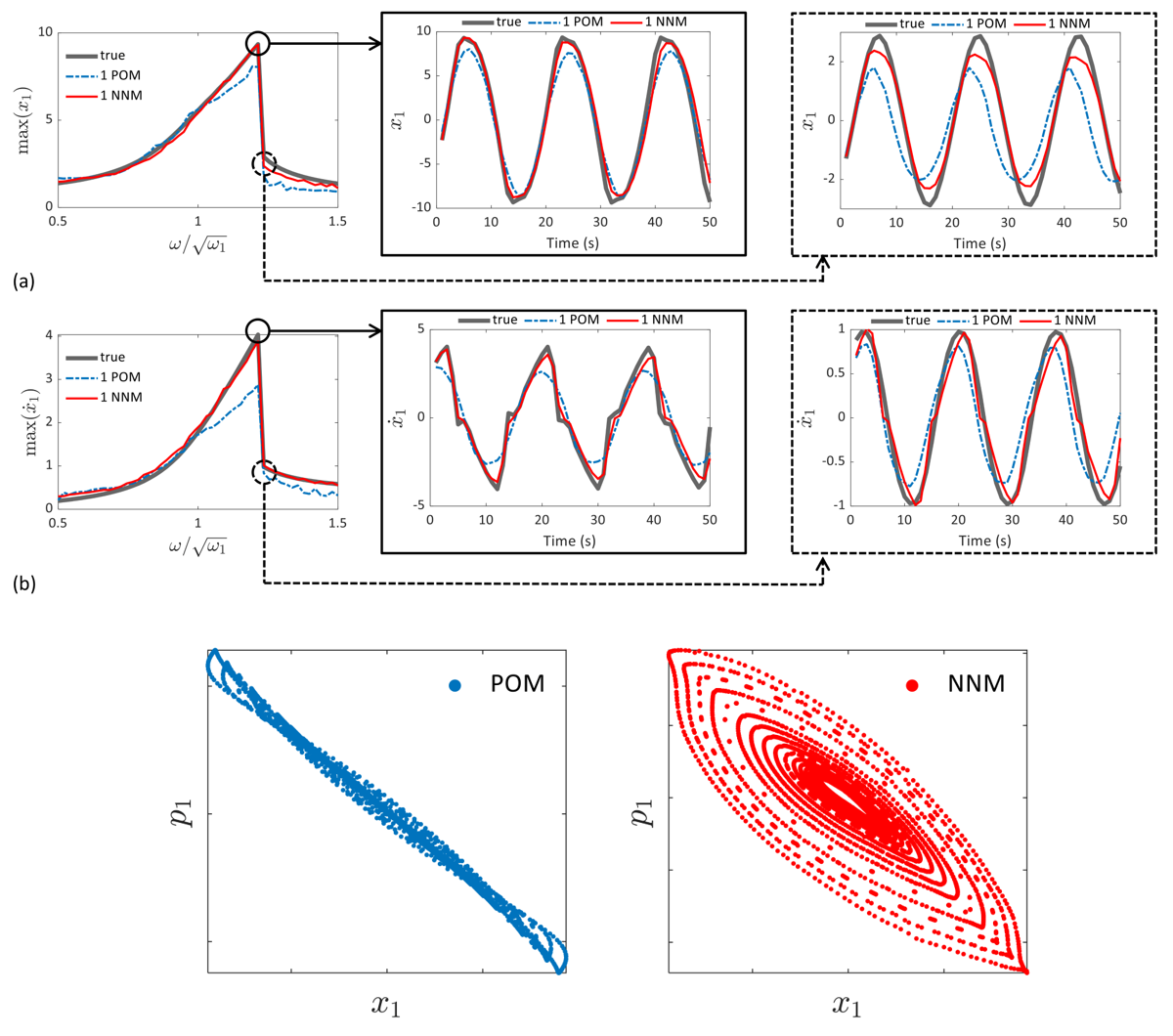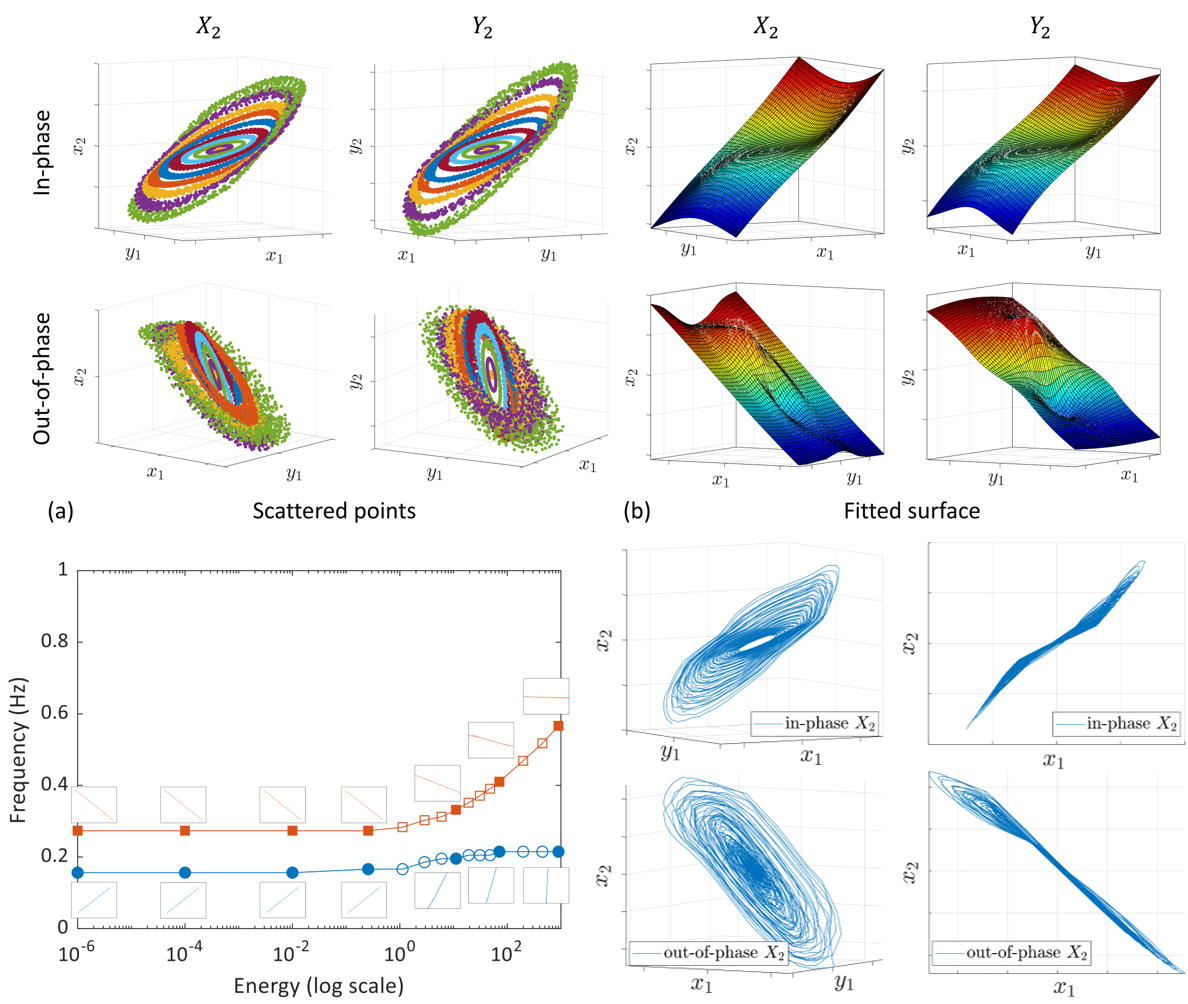Research
Our overarching goal is to understand and leverage dynamics behaviors of structures and systems and enable intelligent engineering systems. Our specific research includes Sensing, Modeling, Analysis, and Control of dynamic structures and systems, spanning the broad areas of system identification & control and experimental & computational mechanics, combining approaches from machine (deep) learning and computer vision with optical and acoustical tools. To this end, we develop novel computational sensing tools and “physics-guided” machine learning methodology for high-fidelity modeling, identification, and characterization of complex structural, material, and system behaviors. Our work strives to advance applications for structural health monitoring, non-destructive evaluations, dynamical system identification and control in the broad areas of cyber-physical systems.
Here are some themes and techniques that we currently work on:
AI-empowered Computational Sensing of Structural Dynamics:

The resolution of sensing systems is fundamentally governed by the diffraction limit, which indicates that the minimum resolvable feature size is in the order of the wavelength of a propagating wave. To image smaller features (e.g., hidden material defects), short wavelengths (or high frequencies) need to be employed. However, when the frequency is increased to employ a shorter wavelength, the propagating wave suffers higher attenuation that limits the imaging range that can be covered. Implementing high-power equipment that increases the excitation energy and thus imaging range is costly and sometimes risky. Moreover, as the excitation frequency increases, the coherent noise due to material backscattering and the emergence of multiple scattering limits the upper bound of frequency. We study computational super-resolution sensing, aiming to computationally recover the sub-wavelength object features (e.g., material defects) from measurements taken with insufficient wavelength; however, it is a challenging ill-posed inverse problem. Our research explores and leverages the power of deep learning to investigate the feasibility of enabling super-resolution ultrasonic beamforming that computationally exceeds the diffraction limit and visualizes sub-wavelength material defects of metallic structures.

Engineering structures are typically large-scale and exhibit complex behaviors under dynamic loads from operational environment (e.g., wind and traffic) as well as natural hazards (e.g., earthquakes and hurricanes) and man-made extreme events (e.g., impact and blast). High spatial and temporal resolution structural response (vibration) measurements and modeling are thus required for high-fidelity characterization, analysis, and prediction of the structure’s response. However, it is a significant challenge to obtain high-resolution structural vibration measurements using traditional techniques. For example, the widely-used accelerometers and strain-gauge sensors can only be placed at a limited number of places on the structure, providing low spatial resolution measurements. Laser vibrometers offer high-resolution measurements, but are expensive and make sequential measurements that are time-consuming. On the other hand, photogrammetry using digital video cameras is relatively low-cost, agile, and provide remote, high spatial resolution, simultaneous, measurements where every pixel effectively becomes a measurement point on the structure. We develop a new full-field imaging method to enable the blind extraction and realistic visualization of the full-field, high-resolution, dynamics response of an operating structure from only its digital video measurements under natural white light illuminations using video motion manipulation and unsupervised machine learning techniques. We investigate the feasibility of applying this method to detect minute, non-visible structural damage at a pixel resolution with laboratory experiments and real-world case studies of various engineering structures. We also extend it to 3-dimensional full-field imaging of structural dynamics.
see Researchgate Project, scope - R&D 100 - Video-Based Dynamic Measurement & Analysis, R&D 100 Award 2018, The Best Paper Award of 2015 United Nations International Conference on Sustainable Development, New York, Mary & Richard Mah Publication Award in Engineering Sciences 2018, 2nd place of 2019 Fedtech, 2nd place of Student Competition in IEEE Resilience Week 2016.
See video extras; Our patent US Patent 10,567,655
Identification & Predictive modeling of nonlinear dynamical systems

Dynamical systems in the real world generally exhibit complex nonlinear phenomena such as frequency-energy dependence and modal interaction. Their accurate modeling and representation typically require high-dimensional models, resulting in great difficulties in analysis and computations. Reduced-order modeling (ROM) aims to alleviate such modeling and computation challenges by identifying reduced-order models (ROMs) that accurately capture the nonlinear dynamics embedded in the original high-dimensional space. Establishing a ROM generally involves two steps - (i) seeking a lower-dimensional subspace spanned by a reduced set of bases for the dynamical system; (ii) formulating the ROM by projecting the full-order model (FOM) onto the subspace. Fundamental challenges in ROM - (c.1) the selected bases are required to result in an optimal lowest-dimensional ROM with high-fidelity reconstruction; (c.2) the determination of the reduced set of bases is required to be efficient; and (c.3) the bases are required to retain the underlying nonlinear dynamics with clear physical interpretations. Our research aims to address these challenges and develop optimally lowest-dimensional ROM for efficient and effective representation of nonlinear dynamical systems.

Nonlinear systems typically exhibit complex dynamical behaviors, characterizing which has remained a long-standing challenge across science and engineering fields. While normal modal transformation exactly characterizes any linear systems, there exists no such a general mathematical framework for nonlinear dynamical systems. Nonlinear normal modes (NNMs) are natural generalization of the normal modal transformation for nonlinear systems; however, existing research for identifying NNMs has relied on theoretical derivation or numerical computation from the closed-form equation of the system, which is usually unknown. Our research aims to develop physics-integrated deep learning methodology for data-driven identification of characteristics of nonlinear normal modes and generalizing the modal superposition to nonlinear dynamics.
Augmented Reality for visualization & monitoring of dynamic systems

Currently visual inspection is the predominant technique used to inspect infrastructure such as bridges. The general rule is that bridges on public roads should be inspected every 2 years. Structural members that are underwater are to be subject to a visual inspection by a diver. Visual inspection is also a common technique for building inspections and used in applications such as aircraft inspection, baggage inspection, and inspection of high-value manufactured components. More than 80% of inspections on large, transport aircraft occur using visual inspection techniques, and the percentage is higher for small aircraft. In recent years, visual inspection of aircraft has expanded to make use of drones to aid the visual inspector’s ability to see all parts of an aircraft without having to use ladders and stairs. Despite the widespread use of visual inspections, they do have their downsides. Inaccuracies during structural visual inspections have been found to be the result of variations in training and experience, a lack of understanding of inspection requirements and procedures, interpretation of inspection practices, and attitude and work ethic. Lack of policy can also affect consistency between classifications resulting from visual inspection of infrastructure. Our research explore the merging augmented reality tools that feature a variety of sensors, computation, and communication resources to enable relevant structural inspection data to be collected at very high resolution in an relatively unambiguous manner.